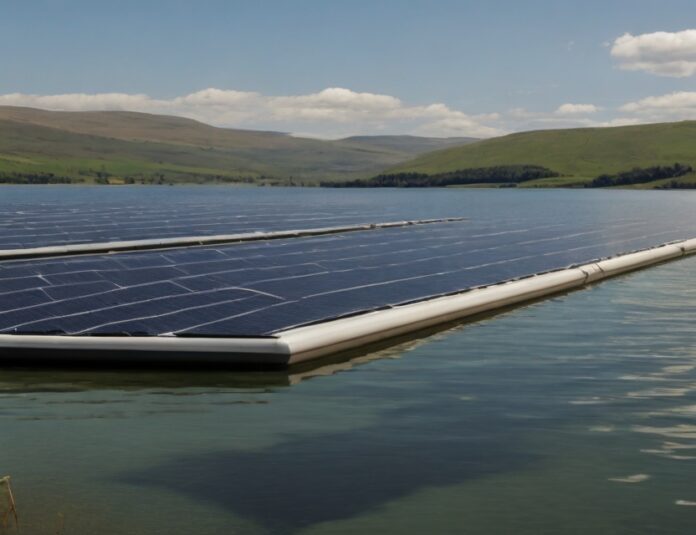
Hey there, sunshine seekers! We’ve got some good news on the solar front.
But guess what’s floating around now? Solar panels on reservoirs and lakes – talk about a game-changer!
Solar power is growing globally, but in the UK, solar farms are taking up valuable agricultural land. However, a solution has emerged: floating solar panels on reservoirs and lakes. This approach has several benefits. First, the water underneath cools the panels, making them more efficient. Second, the panels stay clean because there is no dust buildup. Innovative projects like the Proteus array in the Netherlands even have rotating panels to track the sun’s movement. Despite being smaller, Proteus generates 40% more power than stationary land-based panels.
While China has heavily invested in coal, it has also shown remarkable growth in renewable energy. On the other hand, India is initiating an even larger-scale renewable energy project that is expected to surpass current records. Historically, serene freshwater locations were preferred for floating solar projects. However, Singapore’s successful deployment of this technology on seawater, driven by land scarcity, highlights the adaptability and innovation of floating solar solutions.
Wave motion and salt corrosion pose challenges for ocean-based deployment. However, new “wave-riding” platforms will enable the construction of the first open-ocean solar farm off the coast of the Netherlands soon. The expanding potential of floating solar has prompted UK company Trinzic to advocate for government incentives, with a goal of reaching a capacity of 30 GW by 2030.
In the ever-evolving landscape of renewable energy, the UK faced a dilemma – the growing footprint of solar farms on precious agricultural land. But fear not, for a novel solution emerged, taking inspiration from serene waters: floating solar panels on reservoirs and lakes.
The traditional solar farm setup in the UK was encroaching on valuable farmland, raising concerns about sustainable land use. Additionally, the need for increased energy efficiency and cleaner solutions prompted a search for alternatives.
Enter the era of floating solar panels – a solution as refreshing as a dip in cool waters. The panels, strategically placed on reservoirs and lakes, not only harnessed solar power but also benefitted from the natural cooling effect of the water. No more dust issues, just efficient, clean energy.
One shining example is the Proteus array in the Netherlands, where solar panels are not just stationary observers but dynamic performers, tracking the sun’s movement. Despite their smaller size, these rotating panels generate a staggering 40% more power than their land-based counterparts.
China, despite heavy investments in coal, is making strides in renewable energy. Meanwhile, India is gearing up for a renewable energy spectacle that promises to surpass current records. The shift towards cleaner energy solutions is becoming a global movement.
Traditionally, floating solar projects were confined to freshwater locations. However, Singapore broke the mold, deploying solar technology on seawater due to land scarcity. This showcases the adaptability and innovation potential of floating solar solutions.
While ocean-based deployment poses challenges like wave motion and salt corrosion, pioneering “wave-riding” platforms are set to unveil the first open-ocean solar farm off the coast of the Netherlands. This not only overcomes obstacles but sets the stage for a new era in solar energy.
Advocacy and Goals: In the UK, companies like Trinzic are advocating for government incentives to accelerate the adoption of floating solar technology. Their ambitious goal? To achieve a capacity of 30 GW by 2030, marking a significant milestone in the renewable energy journey.
Conclusion: The solar renaissance is not just about harnessing energy from the sun; it’s about innovation, adaptability, and a collective commitment to a cleaner, brighter future. The journey from land-based solar farms to floating solutions represents a paradigm shift, demonstrating that the path to sustainability is not fixed but fluid, much like the waters beneath the floating panels.









